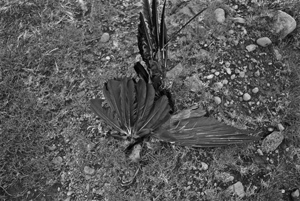“A story must be judged according to whether it makes sense. And ‘making sense’ must be here understood in its most direct meaning: to make sense is to enliven the senses. A story that makes sense is one that stirs the senses from their slumber, one that opens the eyes and the ears to their real surroundings, tuning the tongue to the actual tastes in the air and sending chills of recognition along the surface of the skin. To make sense is to release the body from the constraints imposed by outworn ways of speaking, and hence to renew and rejuvenate one’s felt awareness of the world. It is to make the senses wake up to where they are.” ― David Abram
The question: what is the lineage of what is now called a story (a fiction, a documentary, a novel, a reportage …)? Where does this symbol-laden, semiotic act come from?
When many tell the same one, or when I tell one to myself, in a dream: these are different instances, very much so, than One telling a story—the story—to many. Numbers.
When the story is a deliberate inhalation and exhalation, the warmth of breath, vital, embodied, incarnate, voice: hypostasis.
Before writing, before the interpolation of symbolic systems, the story was the body: the body, a story.
What is at the core of the desperate need to tell stories in this moment, in this cosmos? What is the psychology of storytelling? Everyone has a story, but the embodied, singular telling is suppressed in the noise of the technosocial now.
And when is enough of this telling? word dialogue Light revolution action. When does telling change to listening, and when do words transform into actions?
I force myself to write something, anything, letters on a screen, filling line-by-line. Though there is little to be said and much to be done. A hollow emptiness that has overtaken days and days. Cosmological movement becomes the singular touchstone that allows demarcated time. The horizon, and zenith, the ecliptic and azimuth. Where is the sun, the moon, Andromeda, Orion, Sirius, and the Milky Way? The temporal where of heavenly transit becomes the story.







